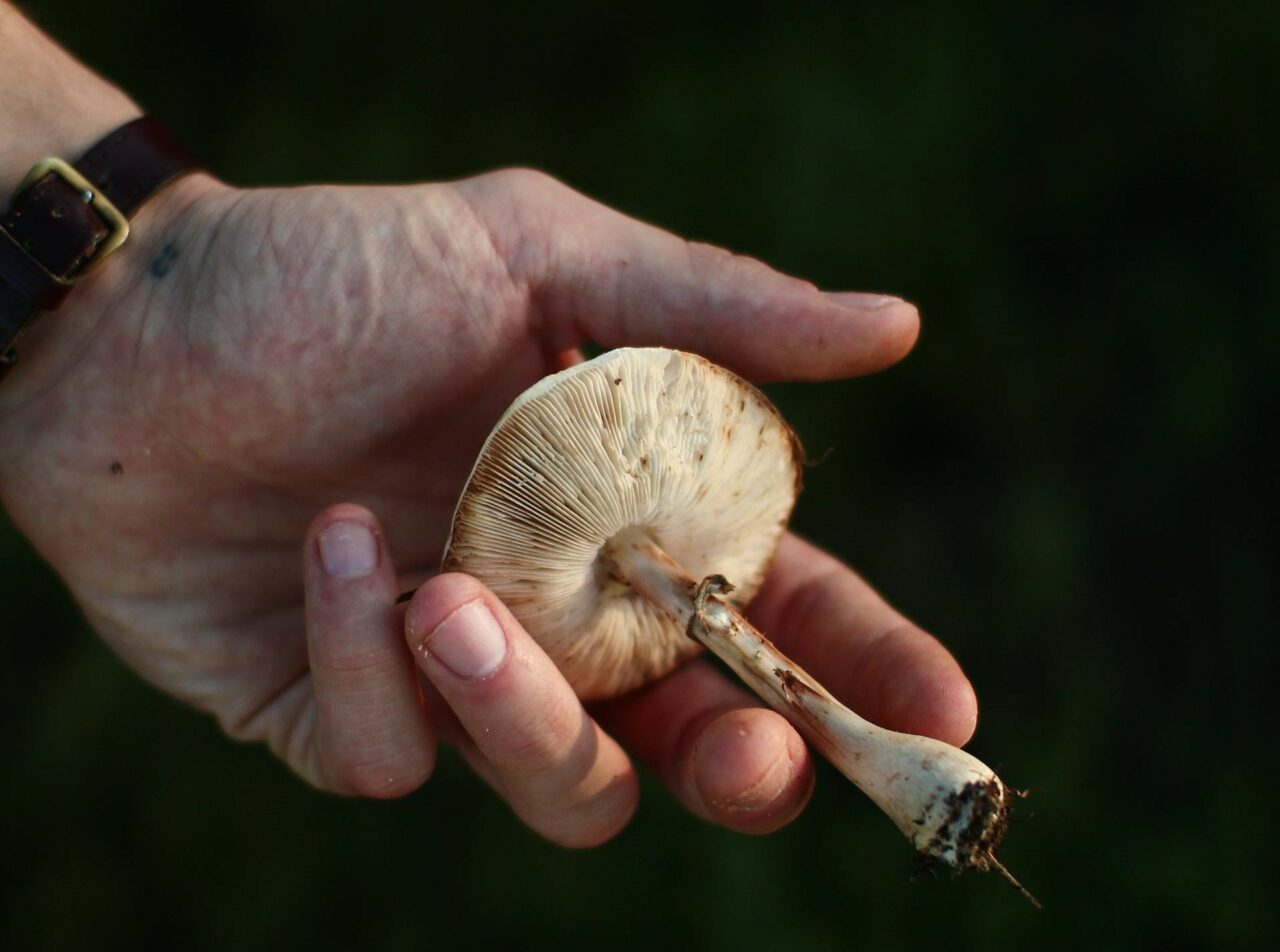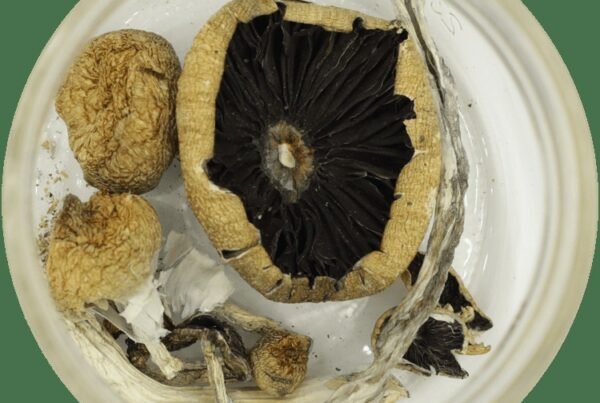Psilocybin mushrooms, a traditional psychedelic similar to LSD in their action as a serotonin 5-HT2A receptor agonist, are currently under investigation for their potential use in psilocybin-assisted therapy. This therapy is being explored as a potential treatment for mental health disorders such as major depression, anxiety, emotional distress, cluster headaches, and migraines.
In order to understand how shrooms may help with these conditions, it’s essential to delve into how they are metabolized in the body. This knowledge can help both researchers and users understand how its active compound produces psychological and therapeutic effects. This article provides a basic overview of psilocybin’s pharmacology and pharmacokinetics.
[toc]
Key Points:
- When psychedelic fungi are consumed orally, half of it is absorbed and distributed throughout the body.
- The compounds in the fungi undergo dephosphorylation through the enzyme alkaline phosphatase, primarily in the liver.
- About 3.4% of the compound is excreted in its pure form within 24 hours, with the majority being expelled as a stable metabolite.
What is Pharmacokinetics?
Pharmacokinetics (PK) pertains to the study of how the body processes substances like drugs once they are introduced into the body. It’s a distinct yet connected concept to pharmacodynamics, which focuses on how a compound interacts with the body. PK investigates four main aspects: absorption, distribution, metabolism, and excretion (ADME).
Grasping these processes enables healthcare professionals to prescribe the most effective medications with the least risk. It also facilitates the customization of treatments to suit each patient’s unique physiology and lifestyle.
How Does Pharmacokinetics Apply to Psilocybin?
Psilocybin and psilocin, the primary active compounds in certain magic mushroom species, have been the subject of significant interest among both researchers and users. Pharmacokinetics explores how the body processes these mushroom-containing compounds and aids in understanding their potential effects, whether for medicinal or recreational purposes.
These compounds are often referred to as “magic,” “psychedelic,” “medicinal,” or “sacred.” The fungi containing these compounds are consumed, with The different mushroom species, which includes their origin, size, growing and drying conditions, and age, can significantly alter their concentrations.
Though these mushrooms are naturally found in the wild, scientific advancements have led to their lab-based synthesis. Both the naturally occurring and their lab-produced counterparts exhibit low toxicity, with minor side effects such as nausea or vomiting possibly occurring.
In spite of these physical effects, the compounds found in these mushrooms exhibit potential therapeutic benefits due to their safe and non-addictive nature. This has led researchers to explore their use in psychotherapy, especially as a treatment for anxiety and depression.
Four Stages of Pharmacokinetics
Psilocybin, the principal compound in these mushrooms, is initially inactive and acts as a prodrug. It transforms into its active form, psilocin, with the help of enzymes like alkaline phosphatase. This allows psilocin to be absorbed and distributed throughout the body, reaching various tissues. However, post oral administration, psilocybin cannot be detected in the circulatory system, feces, or urine.
Absorption
Absorption refers to the process by which the compound enters the bloodstream from its administration site. This process affects the speed and effectiveness of the compound in reaching its target, such as the plasma. The most common route for administration is oral. Inhalation has also been tried but it is not as effective as oral intake.
The absorption process also involves the liberation of the compound from the dosage form during oral ingestion. Elements such as delay in the throat or esophagus can affect this, potentially slowing down the results or causing irritation. Once the compound reaches the stomach, the acidic environment might start breaking it down before it enters the bloodstream.
Animal studies suggest that only about 50% of orally ingested psychedelics get absorbed and distributed throughout the body.
Factors Impacting the Absorption Process
Several factors can influence the absorption process, leading to variations in the onset, intensity, and duration:
- Stomach Contents: The presence of food in the stomach can delay the process as it slows down the onset of effects. Faster absorption is possible with an empty stomach.





